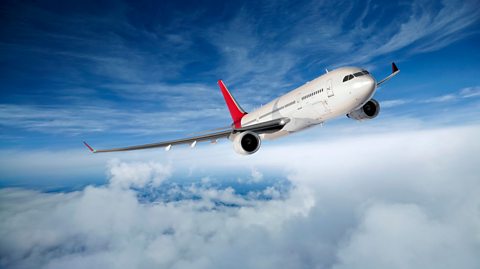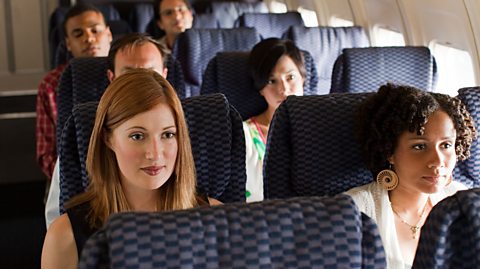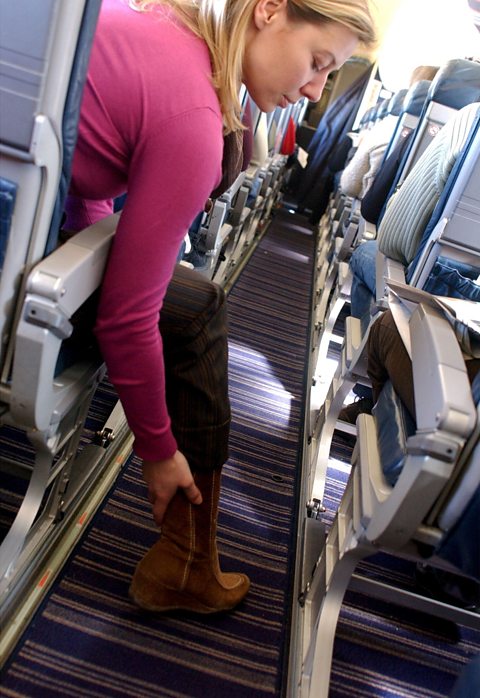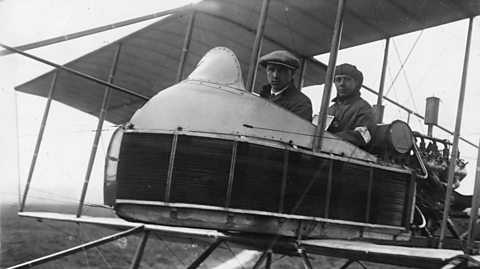When you think of all the things human bodies are made for, zooming through the skies in a long metal tube might not be the first that springs to mind.
But the dawn of aviation meant that, eventually, people made a habit of ascending tens of thousands of feet into the air, and dealing with all the changes it brought to our physiology. If you’ve ever wondered what exactly you’re putting your body through on that three hour flight to Malaga, read on.

It’s a swell old time
It’s handy to have a knowledge of Boyle’s Law before booking a flight. It explains why items such as crisp packets and plastic bottles expand while you’re airborne. If you’ve never heard of it, the rather complex details are: “the pressure and volume of a gas have an inverse relationship (when temperature is held constant).”
To boil that down (sorry…), what it means is that as the air pressure in a plane’s cabin decreases, then the volume of air inside a packet or plastic bottle will increase. As it increases, the bag or bottle containing it will also expand.
Boyle’s Law isn’t restricted to packaging. It can make people swell up too. The gas in your stomach and intestine can increase too, making passengers more prone to breaking wind while in the air. Good thing your sense of smell has already been impaired, then.
The bacteria hot spots
Have you ever returned from a smashing holiday, only to be laid low by a sore throat or cold? One of the reasons could be your flight home.

The circulation of germs around an aeroplane is often attributed to the ventilation system recirculating air carrying bacteria from the various passengers (some of whom may be less healthy than others) along with the fresh air from outside. But research has shown this is not the case. Air coming from outside at such a high altitude is free from germs and the systems within the plane itself filter out harmful bacteria before it is pumped back into the cabin.
What makes us feel lousy after a flight, then, is being in such close proximity to so many people for such a long stretch of time. A study made for the Canadian Broadcasting Corporation in 2018 also found that the headrests and the seatback pockets which hold magazines and the in-flight safety information are the worst culprits for harbouring germs, two places we can’t really avoid while in our seats. Best get the anti-bacterial gel out before you board to give your fellow flyers a fighting chance.

Our legs need stretching
You may have heard people raise concerns about deep vein thrombosis (DVT) affecting their legs during a flight. This isn’t due to the altitude a plane reaches, moreso the tight spaces passengers sometimes have to sit in, especially if they have long legs. It’s not just planes, either. DVT can develop if you’re sat in any vehicle with restricted leg room for lengthy periods.
These restrictions in a tighter space affect the usual circulation of the blood around the body, causing it to pool in the legs where the veins are deepest. That can increase the risk of blood clots. To stop this, it’s advisable to move around the cabin as much as possible to keep the circulation pumping, or by wearing compression socks which apply a little pressure on the lower leg to encourage better blood flow.
The air that we breathe
Aircraft have an internal pressure that’s 75% of what we’re usually used to. Basically, you’re experiencing the same altitude as residents of Mexico City, which is more than 2,200 metres above sea level. We’re usually capable of coping with this change but it could have an adverse effect on people with long-standing lung conditions. For example, the reduced air pressure can have an impact on people with serious asthma.
When you breathe on a plane, you’re taking in the air directly from outside which is filtered in to the cabin. At that height, there is very little moisture in the air which can leave passengers feeling dehydrated. Your nose, throat and mouth will also become dry so it’s important to take in as much water as possible. Avoiding caffeine and caffeinated drinks if you can, they are a diuretic which dehydrate you even further.
These drier conditions aren’t brilliant for the skin either. It’s advisable to keep it moisturised if you can.

Recharge your tastebuds
Think of the airline food you may have had in your lifetime. One thing that can come to mind is how seasoned it was. There’s a good reason for that, as one third of our tastebuds stop working at high altitude, making most things seem rather bland when we’re chewing away on them.

The extra seasoning, usually salt, is needed to bring out the flavour and do the work the taste buds are temporarily stopped from doing. It doesn’t help that the cabin atmosphere causes your nose to dry out as well as a large part of the tasting experience comes from a food’s aroma.
Who set my body clock?
To understand jet lag, we have to get our head around our body’s circadian rhythms, which we know better as the body clock.
These rhythms dictate our sleeping patterns. When we fly across different time zones, for example, we may step off a plane at 2pm in one country while our circadian rhythm is set to a time of 9pm back home. This can lead to sleep disruption, as you’ll be readying yourself for bed while many others in your new destination are heading home after a day at the office. Unless you power on through and stay awake until everyone else is tucking in for the night, it can lead to a serious case of jet lag.

Jet lag causes you to be irritable and have headaches and insomnia, and tends to be more severe when your flight travels east rather than west. Travelling east makes the day shorter and delays dealing with the lag which is more difficult to cope with than arriving at a destination where the day is longer and staying awake later can help counter the jet lag.
After all that, please don’t be put off getting on a plane. We may swell a little, burp a little or even disembark with a few more germs than we boarded with, but it’s perhaps a small price to pay for the joy that travel brings. But consider train or ferry travel too - the impact our collective carbon footprint has on the environment lasts far longer than a diminished sense of taste.
This article was published in July 2019
Who helped flight take off?
Find out who paved the way for Iron Man's flying suit.

If you want to climb mountains like Jordan, you need to be fit and healthy. Find out what your body needs here.

Hot or not? Is the summer hit a timeless phenomenon?
Will the phenomenon of the song of the summer stand the test of time?
